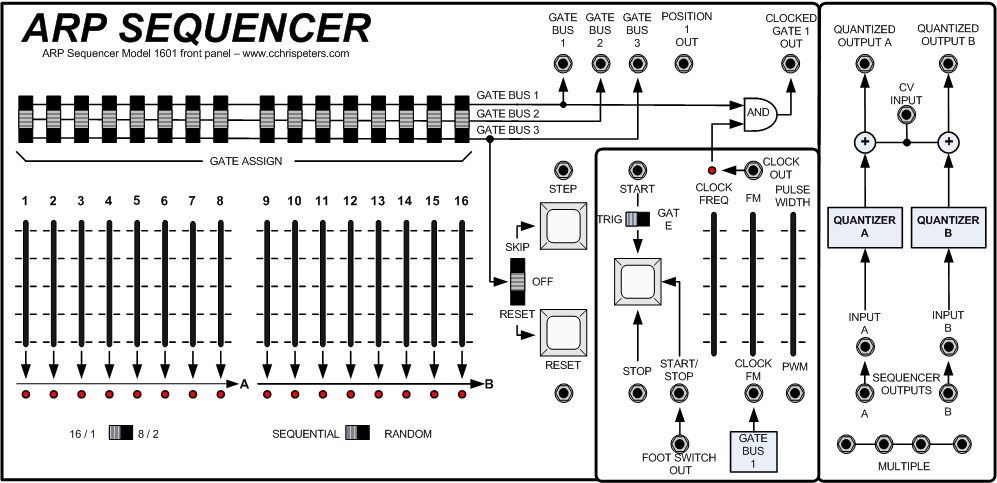Designed as an ancillary controller for the ARP 2600 and ARP Odyssey, the ARP Sequencer is primarily used to generate ostinato or repeating musical patterns up to sixteen single events or two parallel patterns up to eight events each. Sixteen slider controls tune each event stage. These tunings can be used to control the pitch of an oscillator or be used to change filter settings. Sixteen assignable gate voltages are used to choose (from one of three Gate Busses) which event will sound and which one won't.
The ARP Sequencer outputs two types of control voltages for playing musical notes, "CV" for pitch and "Gate" for duration. Notes can be selected to play in predictable patterns or played back randomly. The playback tempo of sequence patterns can be controlled by an internal clock, be synchonized externally from analog synthesizers like the ARP 2600, or triggered from drum machines that output trigger voltages. The faster the clock rate is set, the faster the sequence will loop through its events.
The Quantizer feature allows the adjustable control voltages from the slider controls to be rounded to the nearest 1/12 volt for faster chromatic tuning. Oscillators and filters can be controlled from either quantized or unquantized voltage controlled out puts. Running sequences can be transposed from a synthesizer keyboard via the CV input.
ARP Sequencer Features:
- 16 LED 's show speed and events being played
- 3 Gate Buses
- 2 Voltage Quantizers
- 3 Sequence control buttons
- Internal Clock with Pulse Width Modulator
- 4 Multiple jack connections

Facsimile of ARP Sequencer's front panel